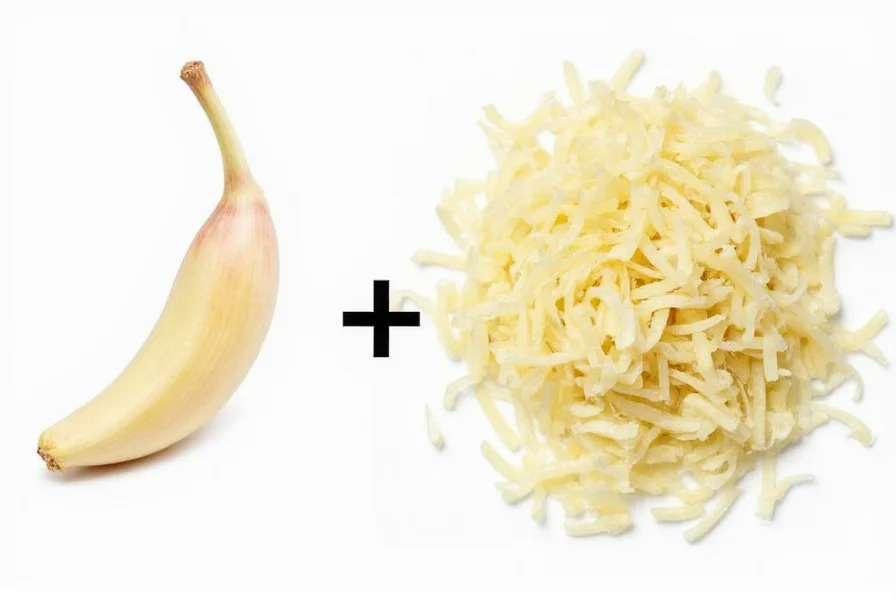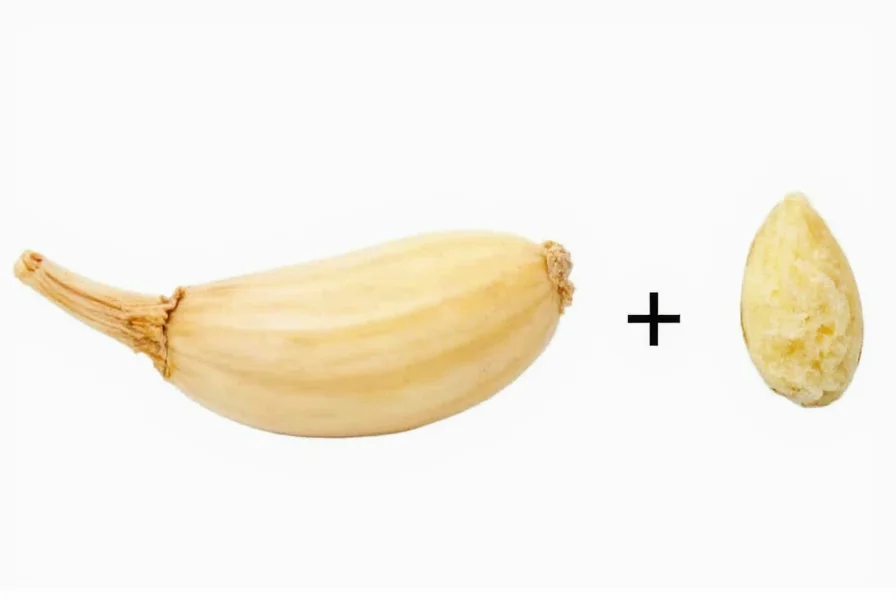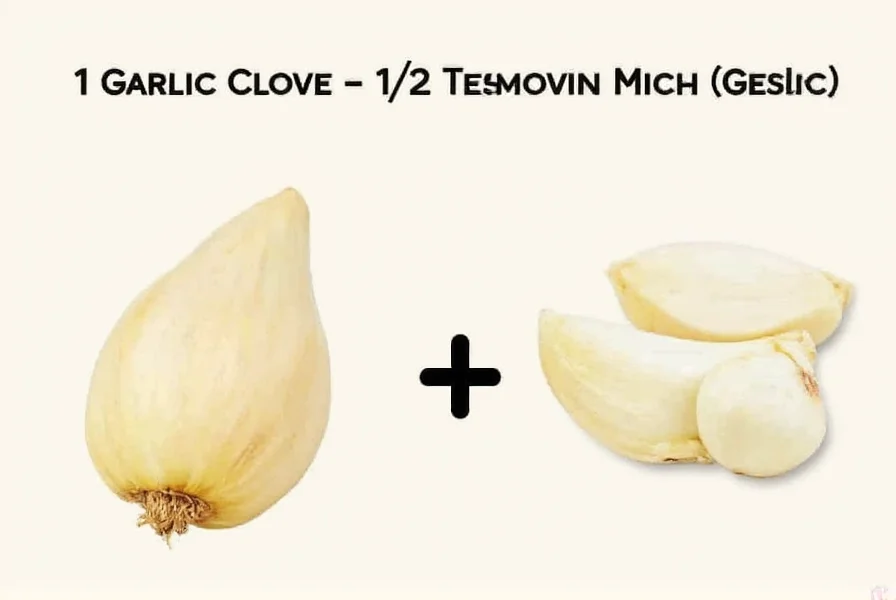When following recipes that specify minced garlic but you only have whole cloves, knowing the exact conversion ratio prevents flavor imbalances in your cooking. The relationship between whole garlic cloves and their minced equivalent depends on several factors including clove size, mincing technique, and garlic variety.
Understanding Garlic Measurement Conversions
Garlic measurements can vary significantly based on the size of the cloves you're working with. Commercially available garlic typically comes in three standard sizes that affect your conversion calculations:
| Garlic Clove Size | Whole Clove Weight | Minced Garlic Equivalent | Chopped Garlic Equivalent |
|---|---|---|---|
| Small | 3-5 grams | 1⁄4 teaspoon | 3⁄4 teaspoon |
| Medium (standard) | 6-9 grams | 1⁄2 teaspoon | 1 teaspoon |
| Large | 10-15 grams | 3⁄4 teaspoon | 1 1⁄2 teaspoons |
These measurements assume proper mincing technique where garlic is finely chopped into uniform pieces. The actual volume can vary by up to 20% depending on how tightly you pack the minced garlic into your measuring spoon.
Practical Applications in Cooking
Understanding how many teaspoons is one garlic clove becomes particularly important when scaling recipes or substituting ingredients. Professional chefs recommend:
- For delicate dishes like fish or light sauces, use the lower end of the conversion range (1⁄4 teaspoon per small clove)
- For robust dishes like stews or roasted meats, use the higher end (3⁄4 teaspoon per medium clove)
- When converting from jarred minced garlic, remember it's typically more potent than freshly minced
The conversion ratio for garlic clove to minced conversion also affects the timing of when you add garlic to your dish. Whole cloves release flavor more slowly than minced, so substituting one for the other may require adjusting your cooking technique.

Factors Affecting Garlic Conversion Accuracy
Several variables influence the precise garlic measurement equivalents in your kitchen:
Clove Size Variability
Garlic bulb size varies by season and growing conditions. A single bulb might contain both small and large cloves, making consistent measurement challenging. When recipes specify "1 head of garlic," this typically contains 10-12 cloves yielding approximately 5-6 teaspoons of minced garlic.
Mincing Technique
Your mincing method significantly impacts volume:
- Hand-minced garlic typically yields slightly more volume than processor-minced
- Garlic pressed through a press creates a denser product (about 20% less volume)
- "Mincing" with a knife versus a microplane produces different particle sizes
Moisture Content
Freshly harvested garlic contains more moisture than stored garlic, affecting both weight and volume. Garlic stored for 2-3 months loses approximately 15% of its initial moisture content, slightly reducing the minced yield.
Substituting Minced Garlic in Recipes
When your recipe calls for minced garlic but you only have whole cloves, use these guidelines for perfect substitution:
- For most savory dishes: 1 medium clove = 1⁄2 teaspoon minced garlic
- For garlic-forward dishes (like aioli or pesto): increase to 3⁄4 teaspoon per clove
- When using pre-minced jarred garlic: reduce quantity by 25% (it's more concentrated)
Understanding the precise how much minced garlic equals one clove ratio prevents common cooking mistakes. Many home chefs accidentally double their garlic content by misunderstanding this basic kitchen conversion.

Advanced Garlic Measurement Tips
Professional kitchens use these techniques for precise garlic measurement:
- Weight-based measurement: For critical recipes, weigh your garlic (10g whole = 7g minced)
- Infused oil method: When exact garlic pieces are problematic, infuse oil with the appropriate number of cloves
- Flavor balancing: If you've added too much garlic, balance with acid (lemon juice) or sweetness (honey)
Remember that garlic's potency increases when raw and diminishes when cooked. The conversion ratio for substitute minced garlic for whole cloves in raw applications like dressings should be reduced by 25% compared to cooked dishes.
Frequently Asked Questions
How many cloves of garlic equal 1 tablespoon of minced garlic?
Three medium garlic cloves yield approximately 1 tablespoon (3 teaspoons) of minced garlic. This conversion assumes standard-sized cloves and proper mincing technique. For small cloves, you'll need 4-5 to reach 1 tablespoon, while large cloves may require only 2-3.
Can I substitute jarred minced garlic for fresh cloves using the same conversion?
No, jarred minced garlic is typically more potent due to processing and preservatives. Use only 3⁄4 the amount you would of fresh minced garlic. For example, if a recipe calls for 1 clove (1⁄2 teaspoon fresh minced), use just 1⁄4 teaspoon of jarred product. Always taste as you go when using preserved garlic products.
Does roasting garlic change the clove to minced conversion ratio?
Roasting reduces garlic's volume by approximately 30% due to moisture loss. One roasted medium clove yields about 1⁄3 teaspoon of minced roasted garlic. The flavor becomes sweeter and less pungent, so you may want to increase the quantity slightly compared to raw garlic for equivalent flavor impact.
How can I accurately measure very small amounts of minced garlic?
For recipes requiring 1⁄4 teaspoon or less, use these precision methods: lightly pack minced garlic into measuring spoons, use a toothpick to transfer small amounts, or invest in a digital kitchen scale (1⁄4 teaspoon minced garlic weighs approximately 1.2 grams). When in doubt for small quantities, remember that one average garlic clove contains enough flavor for one standard serving of most dishes.
Why does my minced garlic measurement seem different from recipe expectations?
Variations occur due to clove size differences, moisture content, and mincing technique. Commercial garlic size isn't standardized, and your knife skills affect particle density. For consistent results, consider weighing garlic (10g whole = 7g minced) or using pre-measured portions. Remember that garlic flavor intensity also varies by season and growing region, which affects perceived potency beyond just volume measurements.











 浙公网安备
33010002000092号
浙公网安备
33010002000092号 浙B2-20120091-4
浙B2-20120091-4